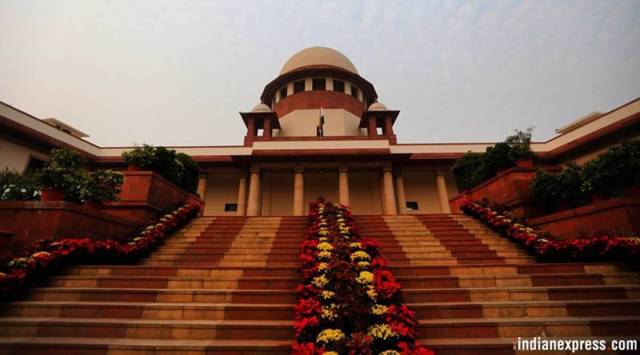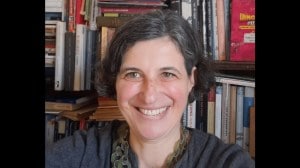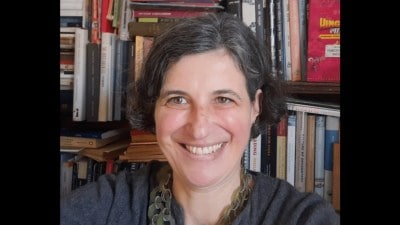Questioning prayers to strike down laws regulating temples and free them from government control, the Supreme Court on Thursday asked a petitioner who raised the plea what is the need for it and said the present arrangement, under which temples have also “catered to the larger needs of society”, has been functioning for a long time.
The court said reversing this would “turn the clock back” to days when “all these temples…these centres of religion, had become places of wealth”.

The SC sought “some material” in support and said it will be heard next on September 19.
Story continues below this ad
The bench said: “There is 150 year of history…these temples, or places of worship, or these denominations — they have functioned in a particular way. Which means they have catered to the larger needs of society and not only their temple, and not aggrandize themselves. After all, why did we have the inams (land parcels granted by erstwhile rulers) abolition?”
“You are virtually rolling the clock back, because all these temples, centres of religion had become places of wealth. Some of them, like Sringeri, etc, gave it up voluntarily. Now if we are to roll back, that’s exactly the point we will reach,” Justice S Ravindra Bhat, who was part of a two-judge bench presided by CJI U U Lalit, said, as senior advocate Arvind Datar, appearing for the petitioner, pointed out that the first such legislation was The Religious Endowments Act, 1863,
Justice Bhat said if such a situation arises, “there has to be some framework where, obviously, everything will not be used by the centre or that religion but will go back to the people”.
The court was hearing a PIL by advocate Ashwini Upadhyay, who urged it to declare that Hindus, Buddhists, Jains and Sikhs have rights to administer their religious places without state intervention — like similar rights Muslims, Christians and Parsis enjoy.
Story continues below this ad
Datar said Upadhyay’s plea had challenged Endowment Acts of various states and said that only Hindu endowments are regulated, while others are not. He said similar petitions had been raised in a pending plea by Dayananda Saraswati.
Datar said the laws are a “direct violation of Article 26(b). I have a right to manage my temples.”
Article 26 (b) deals with freedom to manage religious affairs, subject to public order, morality and health.
Senior advocate Gopal Sankaranarayanan, also appearing for the petitioner, said thousands of temples had closed down due to lack of funds.
Story continues below this ad
But the CJI called these “sweeping statements” and asked “where are the documents” to support the contention.
Sankaranarayanan said even if the issue of mismanagement is ignored, “the legal issue is much larger”.
As he referred to revenue from Tirupati, Justice Bhat said, “This could be a debate. After all, if it is a seat of the temple, it is by the people. So it has to go back to people in some form. So the town of Tirupati is benefitted. You have universities, a whole range of services…which have come up.”
But Sankaranarayanan said many of these are through private endowments.
Story continues below this ad
“Maybe,” Justice Bhat said, “but then this is also through state enterprise. We have colleges even in Delhi [under Tirupati trust]; there are universities. What you mentioned could be different. I am not talking of that.”
Sankaranarayanan asked why only one religion is used for this.
Justice Bhat replied, “One understands where you are getting at. The point is the scale of offerings, maybe Tirupati or even in Shirdi, so colossal…. Are you suggesting that it should be outside the pale of regulation or it should only be with those centres?”
“We are saying that please have an even scale for everybody,” Sankaranayayanan said. “In a secular state, you have to distance the Church from the State. If the State is going to get proximate with one religion, there is a problem. We have to correct that.”
Story continues below this ad
Newsletter | Click to get the day’s best explainers in your inbox
The senior counsel said he was not asking the court to legislate on the point but to strike down laws which violate Article 14.
Justice Bhat said, “That is one case. You will then be left with what…. The wealth that is generated, nobody is there to regulate…no law to account to. Nobody to audit this, and you will be [the] centres of power in your own way.”
He said, “You can’t compare (case of temples) with the other religions. They may have their own systems of checks and balances — I don’t know that — but the scale (in the case of temples) definitely is different.”
Story continues below this ad
Sankaranarayan pointed out that similar issues had already been looked into by the court in the Padmanabha Swamy temple case when some PIL petitioners had raised the issue of mismanagement.









